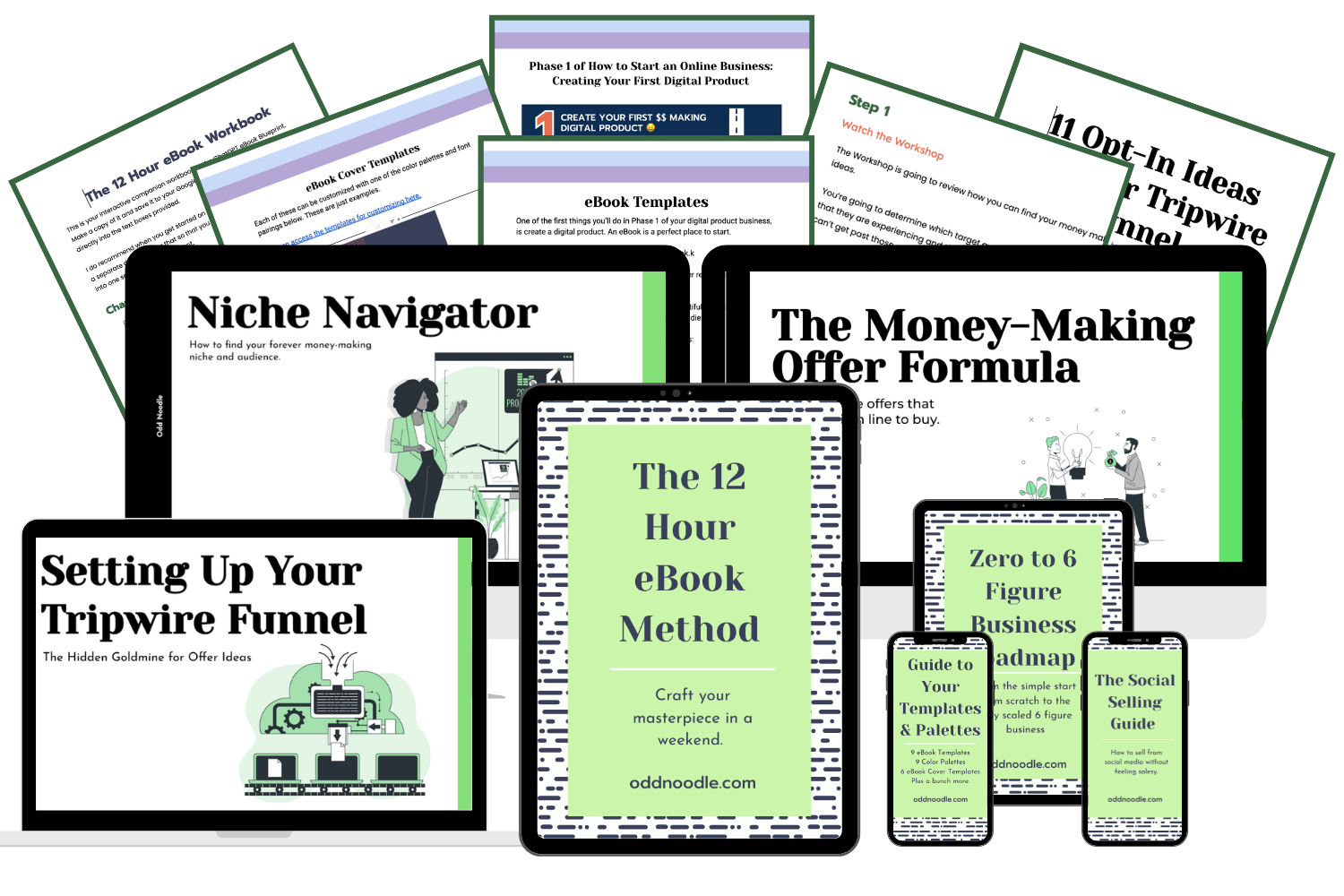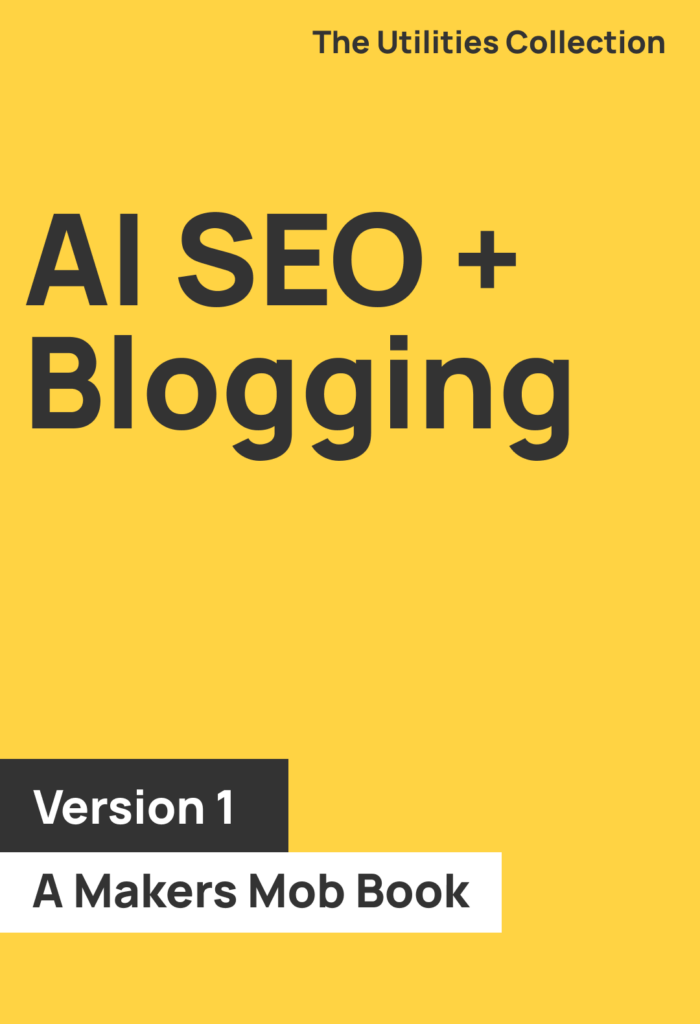So you’re thinking about starting a mom/parenting blog. That’s cool and I want to help you out but before we dive into everything I need to ask you a question.
Do you really want to know how to start a mom blog and make money or do you want to go through the motions of saying you have a blog just so you can tell your friends and family?
I don’t ask this question to insult you. I ask it because it’s an important question to ask.
This guide will prepare you for such a venture, but you’ll notice that I don’t talk about the stuff that others do. I don’t believe starting a blog means buying web hosting.
I believe in starting a business that actually makes money and the purpose of this guide is to put you in the best spot to make that happen.
However, it’s a long guide so you might want to bail now and find someone else to show you a different path.
Don’t worry, it’s not long just to be long. It’s long to be thorough and help you understand how we teach blogging to 1000s of people.
I can promise you that it’s going to be worth your time to go through it so at the very least you can decide if this whole blogging thing is for you or not.
Now I think it would be wise to discuss what a blog is. I know, I know you’re saying you already know what a blog is, but just humor me for a bit on this one.
Who am I?
I think this is one of the most important questions to ask because if some GUY is going to teach you how to start a successful mom blog then he better have some credentials to back it up.
Right?
I mean, I’m a guy! I’m not a mom.
So for that, I can’t teach you how to write about your experience as a Mom. I could as a Dad, but we aren’t talking about Dads.
(Technically what you’ll learn in this post applies to both Moms and Dads so if you want to get Dad involved in this you can.)
My name is Paul Scrivens and I help to run this place you’re at now. What we do is help individuals build successful online businesses. We’re pretty good at it because we do a lot of it ourselves.
One of the ways we help people build successful businesses is by showing them how to effectively use blogging as part of their business.
This goes far beyond learning about how to set up WordPress and buy a domain.
Our goal is to show you how to build a business.
This shit isn’t a hobby so why treat it like one?
We’re also always starting new blogs to continue to test the waters. It doesn’t make sense for us to tell you how to build a successful blog using the knowledge that we acquired 5 years ago that could be obsolete.
Instead, we torture ourselves by starting from scratch a couple of times a year.
But if we’re being honest, none of this helps you at all if what follows isn’t helpful. That’s what is the most important.
Make sure you get the value out of this guide that you need.
So let’s start with the value giving.

What Is a Blog?
Many people will say a blog is a site that holds the posts that you write and technically that is true.
However, a blog is really much more than that.
You see, if you want to run a successful online business then that online business MUST follow the 4 principles of business.
What are those?
That’s it.
If you can do those 4 things then you will succeed at business.
100% guaranteed.
The problem is actually doing those 4 things well. Many bloggers are able to do 1 thing well and fail at the other 3. I want you to be able to do all 4 really well because when you do all 4 really well, you won’t have to worry about where the money is coming from.
So what role does blogging play in this?
That’s a good question! Look at you, already moving to the front of the class.
Your Blog Is Marketing
The term marketing often gets a bad rap.
Marketing when done right is very, very good for the world.
Do not mistake marketing for advertising.
The goal of marketing is to help transform an individual from who they are currently to who they want to be.
The goal of advertising is to simply sell you on something.
It might not seem like a different but it’s huge.
When you write a blog post, a GOOD blog post, it’s going to be one that truly helps the reader. It can be with something small or it can be with something big.
Either way, it’s meant to help them.
What you’re doing with a blog post is marketing. You write a blog post and you tell people about it.
You say, “Hey, I’ve written a post.” (1. Get them to notice you)
When they notice you then you say, “And it’s titled the 17 Ways to Use an Orange to Grow Your Hair Back.” (1 & 2. Get them to notice you and pay attention)
(Quick note: This oranges post will only work on people who need help with growing their hair back. Your blog should only be trying to talk to the people who are interested in the help that you’re providing. Remember that.)
These people are intrigued so they visit your blog post and they start reading it. (2. Get them to pay attention to you)
Some people want to see if what you say really works so they give it a shot and it works! (3. Get them to trust you)
I’m not going to tell you the money part yet because that’s a deeper topic that we will definitely explore in a bit.
But you should start to get the gist of this. You’re not just writing to write. Your blog posts are part of what is known as the marketing funnel.
Every business has some kind of funnel. Even the local sandwich shop down the street.
They probably use flyers to get people to notice them. Then they offer some specialty type of sandwich that gets people to pay attention. Once people taste the sandwich and love it, they’ve gained their trust and now they have repeat customers with a sweet loyalty program.
In essence, they have a funnel.
This is why blogging, when done correctly, can be so effective for any type of online business.
When you decide to start a blog, you’re not really starting a blog. You’re starting an online business where the blog simply acts as the marketing department.
This is important to understand.
The blog is not the business.
It’s easy to think it is because that’s how so many people talk about it, but that isn’t the case at all. The blog does some of your marketing for you and is part of your overall funnel, but you don’t make money blogging.
Just like the sandwich shop doesn’t make money from handing out flyers.
Tons of people understand this concept, nod their heads in approval, and then try to implement it. Unfortunately, they fall flat on their face because the execution is a lot harder than the concept.
Too many people are led to believe that starting a blog is as simple as installing WordPress, writing some posts, and then watching the money come in.
It doesn’t work like that.
Ever.
However, I have a surprise for you. There is a system that you can follow that speeds things up and gives you the best chance of success.
That’s what we’re going to talk about in this guide.
The very first thing that you need to consider when you want to start a blog is what niche the blog is going to be in.

How to Start a Mom Blog: Choosing a Niche
I know, you think I’m an idiot for telling you that you need to choose a niche. You’re on a post that talks specifically about how to start a parenting blog so obviously the niche is parenting, right?
Eh.
That depends on what you think a niche is. In the simplest terms, you can definitely think of a niche as a topic. But if we’re being honest that’s a bit too basic and it can lead you to trouble down the road. `
A niche is really your audience.
For example, you could say fashion is a niche. But then you also know you can break down fashion into smaller sub-niches, right?
But fashion can also be broken up into the people that enjoy the types of fashion.
If you run a site on denim then is it for men or for women? What if it’s for denim lovers no matter the demographics?
There can be 20 different denim blogs that you come across and each of them is talking to a completely different audience.
But since this is about a parenting blog let’s use an example to really drill home this concept.
There are two women who have started pregnancy blogs. You don’t know anything about their demographics because a lot of the time it doesn’t matter.
You know that once they have a baby they both start to breastfeed, but they are both having problems with producing milk.
You still might think they are the exact same blog.
But one of the women has a potty mouth and that’s how she writes as well.
The other is more reserved in her language but does a good job of storytelling.
A reader could read both of the blogs and even though they cover the same subject, they may love one and hate the other.
Same topic. Different audiences that they’re able to attract.
That’s why niche goes far beyond just the topic that you pick.
So while it is important to understand WHAT you want to write about, it’s also important to understand WHO you want to write to.
I’m not talking about Age, Sex, Location.
I’m talking about how they view the world. What things do they struggle with? What aspirations do they have?
If you can figure these things out and let them know that you feel the same way, then you’ll have people that stick with you for a very long time and that’s important because blogging can’t just be a game of getting page views (we’ll talk about that in a bit).

Is There Money in the Niche?
This is a super important question to ask when choosing a niche and not enough people do it.
For example, I work with so many people who want to start blogs on frugal living. That’s great. Plenty of people are looking to live a frugal lifestyle.
However, there is one gigantic problem with this.
Your main revenue stream is always going to ads or affiliate marketing which can often mean you rely heavily on traffic.
We help bloggers transition over to more product-based businesses because we want you to make that good good money ($100,000+ a year).
So why wouldn’t a frugal blog work well?
Think about it!
If you’re teaching people how to save money then why would they be actively looking to SPEND money?
I’m not saying it’s impossible, but you have to think of the mentality of the person. Again, what are their aspirations?
If it’s to save money by spending less then your product has to overcome that thinking and show that they can actually save much MORE money if they buy it.
You’re lucky though because you’re looking into starting a Mom blog and Mom blogs can make money.
Why?
Because Moms spend money.
Does this mean you need to know your product from day 1? Not at all. Just understand that you want to be in a niche where you have that option open to you down the road.
For example, the Speech Sisters have done an amazing job of building a business around the teaching of child speech. Their stuff is great.

Should You Go With Multiple Niches?
A lot of people who start Mom blogs don’t want to talk about just one thing. That’s understandable.
I run over 30 sites because I don’t like to talk about one thing.
However, there are pluses and minuses when it comes to doing a blog that covers multiple niches.
Before we get into that, let’s talk about what I mean when I say “multiple niches”.
You might start a lifestyle blog where there are 3 main categories:
- home decor
- organization
- cleaning
Does this mean the site has 3 niches? Topic wise not really because it all relates to home. Audience-wise not really because the audience that is interested in home decor is probably also interested in keeping it organized and clean.
What a lot of people who start Mom blogs do though is spread out the topics to things like Parenting, Travel, Cooking, Personal Finance, and whatever else tickles their fancy.
That’s when you start to get into dangerous territory.
Having blogs that span unrelated topics can be effective in increasing your chances of getting traffic, but they also decrease your chances of reaching a specific audience.
Is the same person who loves travel really going to come to your site looking for the cooking stuff?
None of this matters if your goal is to only make money with ads because the only thing you need is traffic. However, if you want to sell your own products and services down the road then you’ll want to make sure you’re talking to the right person and delivering the right message.
It’s impossible to know who you’re talking to when so many different people are coming to read so many different topics.
This is a common problem that we see people have who sign up for the Blog Simple Framework AFTER they’ve spent months or years working on a blog.
I’d advise keeping the topics closely related so you’ll be ready in the future when it comes time to create and sell a product.
It’s no surprise why so many people who run lifestyle blogs end up selling blogging products because the only people that they know they can talk to are other people interested in blogging.

Understand Your Hero
At Odd Noodle we refer to our reader as the Hero. If you can take the time to understand the Hero then you’ll have a better idea about the content that you want to create.
Wait, I thought we were choosing a niche?
We are and one of the ways you can do that is by working backwards. Understand the content you want to create or understand your Hero and figure out what content they NEED to achieve a transformation.
While all of this goes far beyond what we talk about in this guide, you can learn more about identifying your Hero and understanding everything about them in our FREE Odd Noodle Playbook.
Once you understand your Hero a bit more you’ll also understand why we don’t usually build blogs with multiple niches. It’s hard to imagine being able to help a problem across many different topics or if someone would actually have problems across all of those topics.
You might be wondering why problems even matter so I guess we should talk about that next as we dive into the content.
Writing Transformational Content
This is a big deal and I know this is where I’m going to lose a lot of you.
There are essentially two types of content that you can create:
- Social media
- Transformational
There is nothing wrong with either and ideally, you’ll end up creating both on your blog.
However, they serve different purposes.
Remember, I’m here to show you how to build a blog that makes you at least $100,000 a year. That’s pretty hard to do with ads alone. It’s a lot easier to do it with products.
Even if you don’t want to believe me, at least believe me while you read this post.
We also want people to fall in love with your brand. We want you to learn how to create a Tribe of True Fans that follow everything that you do.
The only way to do that is by creating transformational content.
What is that?

People Only Buy Improvement
Every single day people wake up and they want to get better.
At what?
Every person is different but they want to get better and there is usually a struggle with getting better. There is usually some obstacle in their way.
If there wasn’t an obstacle then they would already be better.
Thanks to the Internet, everyone is searching online daily for ways to get better.
Transformational content has a single purpose and that is to help someone go from Point A to Point B.
Point A is where they are at now and Point B is where they want to go.
Most of the content that you come across on social media isn’t transformational. It’s entertaining which is what need from time to time, but it isn’t going to change your life.
Transformational content will.
Now, I don’t want you to think that every change has to be something massive.
It really doesn’t.
Point A to Point B can be just one step or it can be a thousand.
That’s why you write multiple blog posts instead of just one because you’re going to figure out all of the different obstacles that your Hero will face along the way of their journey.
And you’re going to address them all over time.
When my wife and I were first-time parents we encountered so many different obstacles to raising our child. We often turn to the Internet to see the experiences of others.
Those who helped were transformational. They might not have thought of themselves as that but we certainly did.
When you can help to improve someone’s life then you’ve taken a huge step towards earning their trust.
And what happens when you earn their trust?
You can start to make that good good money.
One of the biggest sales lessons I ever learned is that people ONLY buy improvement.
That’s it.
Everything that we buy we do so because we think it will improve our lives in some way.
That’s how you should treat your content.
How is this going to improve someone’s life today?
It won’t work for all of your readers, but there will be a couple that will see how amazing your content is and they will want to learn more from you.
That’s how you start to slowly build up your Tribe of True Fans.
I can’t tell you how many blogs simply stand no chance whatsoever because their content isn’t good at all.
Don’t fall for those bloggers that talk about how many pageviews they get and then you see that their content is junk.
What they’ve done is written social media content with catchy post titles that trick people into visiting them. The problem is that those readers leave just as fast.
I can’t and I won’t teach you to build a blog like that.
I want you to build a sustainable business and that only happens when you have a Tribe of people that want to follow everything that you do.
And that simply requires you to do more than what the average bloggers do in your niche.
Surprisingly, that’s not a high bar to reach.

Researching the Content
Hopefully you now understand the importance of content that is transformational but how do you find the content ideas to write?
Don’t worry. I’m not going to present you with 100 blog post ideas that you may or may not be able to use in your niche.
Those lists are great. I enjoy them for inspiration, but it’s much better to develop a full content plan for your blog than to rely on one off posts that may or may not be useful to your audience.
Because of that we need to tackle researching content from two different angles.
- The Hero
- The Competition
Let’s take a look at both.
The Hero
You might have gotten the hint now that I place a lot of focus on the Hero and that’s for good reason. Nobody else matters to your blog’s success.
There will be thousands or millions of people who visit your blog over time, but there are only a small percentage of them that will stick around for a while.
That’s why you need to focus on those people because if you can help those people, the ones that truly want your help, then by default you’ll help everyone else.
It’s called Designing for Extremes.
If you can help the people at the end of the spectrum, it helps the people in the middle.
Think about an Apple product. Beautifully designed for people who appreciate great design and is easy to use for those who don’t want technology in their way.
Instead of Apple saying that they could make something easy to use but it would be ugly or something that is beautiful to look at but hard to use, they made both ends work.
And who else benefits? Everyone in the middle.
Take this giant-ass blog post for example.
It has to be easy enough to understand, but thorough enough that you get something out of it.
And that’s how you’re also going to tackle your research for your Hero.
Think about the Hero that is starting at the very beginning of their journey. What are the first things they should learn?
Think about the Hero that is further along on their journey. What is the more advanced stuff they should know?
Hm, you probably need an example.
Let’s go back to the breastfeeding thing.
The Breastfeeding Journey
At one extreme you have the mother who is about to give birth and wants to breastfeed. This is her first child so it will be her first experience breastfeeding.
She doesn’t know ANYTHING at all.
So where does she start?
At the other extreme, you have the mother that’s been trying to breastfeed but seems to be running low on milk after the first month or maybe she’s trying to ween the child off the milk and transition.
Where does she need to begin on your blog?
As you can see when you take care of the extremes it’s going to be natural for you to take care of the middle naturally because that’s where the content is going to take you.
The easiest path for a content plan is to focus on the extreme that starts at 0. The Hero that doesn’t know what the hell they are doing.
Figure out the final end goal (weaning baby from boob) and then think about the Mother who is just getting started.
What are all of the steps, obstacles, challenges, goals, and other things she will have to experience to get to that final goal eventually?
Here is just a small example of the different types of content that will fit along the Hero’s journey:
- 13 Reasons Why You Should Consider Breastfeeding
- What to do if you can’t breastfeed
- How to get your child to latch onto your breast every time quickly
- The Best Breast Pump When You’re Tired in the Middle of the Night
- How to wean your child off of breastmilk
Now keep in mind that this is just a small sample of ALL of the types of content you could write for this particular Hero.
But how do you figure out all of these steps if you aren’t sure? You could talk to your Hero or you could do research on Google or you could visit communities and see what people are talking about.
These are the things that we cover in the Blog Simple Framework.
Now let’s see how you figure out content by looking at the competition.
The Competition
I really shouldn’t say “competition” because as bloggers, we are all in this together and it’s important to help each other out.
But, if a reader is going to choose ONE blogger to follow it might as well be you, right?
So how do you use the competition to figure out your content?
Easy. You see what’s working for them!
This is where sites like Pinterest and YouTube will be your best friend.
If you go on Pinterest and do research for specific topics you can begin to find what content works best for blogs.
However, it’s important to keep in mind that a lot of the stuff that will work will be stuff that applies to the beginning of a Hero’s Journey.
You aren’t going to find many examples of high-performing pins that tackle specific problems.
You can do the same kind of research on YouTube as well.
If you don’t mind jumping through a freemium service then Buzzsumo can help in a pinch.
Your Silos
By now you should have an understanding of what topics/categories you want to tackle (the Hero’s Journey) and what steps they need to take to get there (the content).
The categories that you want to tackle are called silos and your best bet is to limit your site to 2 – 4 of them.
That might not seem like a lot, but that’s plenty.
Over time your site might expand or contract on silos.
For example, if your site starts with:
- Pregnancy
- Toddlers
- Motherhood
Then over time you find that you want to talk about homeschooling and teenagers then maybe your silos look like this:
- Pregnancy
- Raising Children
- Motherhood
- Homeschooling
Why does this even matter? There are a number of reasons.
1. Clarity for Your Hero
Look at the top of this site.
There is no confusion about what this site talks about. You know what the site is about just by looking at the navigation.
This is automatic clarity for your Hero.
It also provides a helpful map to your reader. If they see you have a silo/micro-silo on breastfeeding then they’ll be more intrigued to dive into the other posts within that silo.
2. SEO
SEO or search engine optimization is going to be one of those pain-in-the-ass things that you have to deal with sooner or later with your blog.
When you work with specific silos it makes SEO a lot easier.
Why?
Because of interlinking. That’s when you have your posts all linking to each other in a natural way and that becomes much easier within a silo because you know the person reading a post within a silo will be interested in other content in the silo.
3. Provides You With a Content Plan
This is the best reason in my opinion.
When you sit down and you look at your silos it’s very easy to wonder what you should write about. Silos make it easy because you simply pick one and start filling it up with content.
Sometimes your silos might be too broad (Parenting for example would be super broad) so then you would look into micro-silos. That allows you to break things up.
So while we do have Home Decor on Bogoten that’s really broad. So we listed out the micro-silos that we would like to tackle over time and landed on doing Bedroom Decor first.
How Many Posts to Start?
I guess the next logical question is how many posts should a silo have to jumpstart it?
There is no obvious answer here because you might have a silo/micro-silo that benefits from 30 posts before you share the world, but a good rule of thumb would be to get 10 posts in a silo/micro-silo before you should feel comfortable moving to the next.
That way you can get some good interlinking between the posts and provide your Hero with a nice map to follow.
Content Before Silos or Vice Versa?
Don’t get stuck in thinking one definitely has to happen before the other. You might sit down, write out your silos, and then do content research only to find that you want to change your silos around.
There is no perfect order.
Think of your blog as something that is a living thing that grows and evolves. Nothing is ever written in stone so don’t believe that these are life or death choices.
You simply want to make sure you pick a plan and run with it for a bit because moving forward is the only way you’re going to succeed with this.
Setting Up Your Blog
5,000 words into a guide on how to start a blog and we’re just now getting to the point of talking about how to get the blog set up.
Crazy right?
Hopefully, you can understand the logic behind all of this.
Getting a blog setup isn’t really starting a blog. There is no point in getting a blog set up when you’re just going to stare at the screen wondering what to do.
However, if you do everything that we talked about before this then you’ll have an awesome blog content plan ready to go and you can hit the ground running when you get the blog up and running.
Do all of that stuff before will also help you see if blogging is something you want to pursue or if that’s the niche you really want to go down.
Isn’t it better to figure all of those things out before you actually spend money?
I think so.
Okay, let’s talk a little about getting this blog set up.
Choosing a Domain
There is no tried and true way to select the perfect domain. What I like to do is follow a couple of guidelines:
- You have to love the domain. If you don’t then it sucks to be in a position where you’ve put all of this work into a site that when you think about it you frown because you don’t like the name. If you don’t fall in love with a name, keep looking.
- It has to be easy to say. Eventually, you’re going to get so big that people will be saying your blog’s name out loud. I used to run a web design blog called Drawar. EVERY SINGLE TIME I’d go to a conference people would ask me how to pronounce it. Lesson learned.
- It has to look good in the browser. Have you been to penisland.net? Would you think it’s a site about pens? Probably not but it is.
When it comes to searching for domains you can go straight to my Domain Hosting provider of choice, Hover.com or if you want ideas for names then check out NameVine.com.
Personal Name vs Brand Name or Is Your Name the Brand?
Another question that people ask is why don’t any of my brands use my personal name and the answer is easy. I’m not sure I’m going to do this forever and if I stop I’d want to sell this stuff.
That’s hard to do with PaulScrivens.com.
Plus, if I used my personal name then I better be sure that I’m sticking to a specific niche and not changing it over time.
There are many valid reasons to use your own name for your blog, but I would only use it if I was setting up a personal blog to talk about whatever I wanted.
That’s how I view things.
Web Hosting
First, you’ll want to go with WordPress as your blogging software simply because it gives you the most options and over time you can do whatever you want with it.
Don’t be scared about the interface or feel it’s too hard to learn.
You don’t need to master it in a day.
With that being said you don’t want to use WordPress.com. Instead, you want to use the Open Source version of WordPress that any web host can install on their servers.
So who do I recommend for web hosting?
If you’re just getting started, which I assume you are since you’re reading this guide, I would go with Siteground.
Why?
Customer service.
They have a great user interface that will have you setup with WordPress quickly. You can get started for as low as $3.95/mo if you pay for a year.
Why Not Bluehost?
Sigh.
It seems like everyone recommends Bluehost so why wouldn’t I?
To put it simply? I don’t like them.
I don’t like their server performance.
I don’t like their customer service.
I don’t like them overall as a company.
They are part of a giant International conglomerate of web hosts so the bottomline is more important to the customer.
By no means am I saying you will have a bad experience with them, but I’m not going to recommend a web host that I myself wouldn’t use just because the affiliate payouts are higher.
A man has to live by a code.

Choosing a Theme
Okay, now to the fun part of blogging. Choosing a theme!
Or for some people the most stressful part.
If we’re being completely honest with each other you can get by just fine with the default themes that come with WordPress or you can hunt down some free themes.
The actual theme you choose isn’t as important as a lot of people make it out to be.
What you do want to make sure of is that your content is easy to read.
Personally, I love GeneratePress Premium.
It’s what we use for ALL of our sites.
It’s lightweight, fast, and highly customizable.
But I’m not going to try to sell you on a blog theme. You gotta choose the one that will make you happy in the long run.
However, what we should talk about is designing the user experience.
The Importance of the User Experience
There are two things that we find almost instantly make your chances of blog success in the long run drop to 0%:
- Shitty content
- A terrible user experience
We’ve already had a great discussion on content so what do I mean by the user experience?
Think about it. We’ve spent so long talking about how your blog is meant to serve your Hero and I think if you’re still reading this you truly believe that.
You believe that if you can serve your Hero in the best way possible then it’s going to be almost impossible for your blog to fail.
And you’re right.
The problem is, how can you serve your Hero if they can barely read your content?
Maybe the text is too small or too light.
Maybe there are too many popups or ads that it’s impossible to see the content at all.

The point is that it can be hard enough to get someone to trust you by just reading your words. It’s almost impossible to get them to trust you if they can’t read your words at all!
Unfortunately, for some blogs, there is a clear difference between cool design and usable design.
Also, please do me a favor.
DON’T FORGET ABOUT MOBILE DESIGN.
When working on our blogs almost everything is done on a desktop where the screen is wide open. However, most of your readers are going to come and visit on a mobile device. You need to be 100% certain that the experience is passable.
If it isn’t they’ll leave just as quickly as they came.
This is what makes the site designs in GeneratePress Premium so awesome. They look great and offer an awesome reading experience right out of the box.
With a theme set up you might be thinking it’s time to get this puppy launched but not quite.
We need to go back to the content. Not the content you wrote for your site.
The content you’re going to write for your emails.
Emails?!?!?!?!?!?!?

The Importance of Email for Your Business
Before you start giving me shit by saying you don’t want to send emails or worry about building an email list let’s talk about why you don’t have a choice if you really want to build a 6-figure business.
Let’s say you finally create the perfect product for your Hero.
You know that when they buy it, it will help them transform. It will get them from Point A to Point B in the quickest way possible.
You get a landing page set up, and people are coming to your site, but nobody is buying.
Why?
They need to trust you more.
While you 100% can get cold traffic to buy from you, it’s much harder than it is to get a warm audience to buy from you.
The difference between cold and warm is that one audience doesn’t know shit about you, while the other believes that you can guide them to their transformation.
So why is email important?
Because you need a way to stay in contact with people.
Think about how a lot of people browse the web today?
How many do it on their phones while they’re trying to kill time?
A ton, right?
If someone is in line waiting on a coffee and they come across your blog do you really think they are going to spend the next two hours devouring everything that you’ve written to build that trust so they are prepared to buy your $99 product?
No chance.
So what you need to do is find a way that you can stay in contact with them. A way that will help you remain at the top of their mind.
This is where email comes into play.

It Doesn’t Have to Take Months to Monetize Your Blog
The sooner you can create your book and get it out, the sooner you have a chance of making money with every single person who visits your blog.
The 12-Hour eBook Method was designed to help you get a book onto your blog in the shortest time possible so you don’t need to wait until you hit 100,000 pageviews before you can start making money.
You Don’t Have to Sell
I think people dread emails because they feel like they are nothing but selling.
Every email is trying to get you to buy something.
But it doesn’t have to be like that.
Ask anyone that receives my emails, they’ll tell you that MOST of my emails aren’t selling shit. They are there just to provide value because that value builds trust and when it does come time for me to sell something, they’re willing to listen.
By the time you’ve built that trust, selling no longer feels like selling. Instead, it feels like you’re just providing an opportunity for your Hero to take the next step in their journey. It feels natural to both of you.
Emailing your audience gives you a chance to build a stronger connection with them and you shouldn’t waste that opportunity.

What to Email Your Audience
This is where a lot of people get kind of silly because they have a list of random templates that you can send your audience. While there is nothing wrong with that it’s not an approach that you want to use for most of your emails.
Instead, what you want to do is continue the journey that you started with on your blog.
You shouldn’t think of your blog and email content as separate things.
Instead, view them as one continuous string of awesomeness that guides your Hero along their Journey.
Email simply allows you to play by different rules.
You don’t have to worry about SEO in an email. You can add more personality in an email because people want to get to know you more.
You aren’t looking to write 2,000-word emails to make sure people see your value.
With an email you get to lay your cards on the table and let your Hero know what you’re all about.
So if you’ve done a good job of mapping out the journey for your Hero then you should see the topics that you can talk about in an email. Don’t think that you can’t talk about the stuff that you’ve already discussed on your blog. You most definitely should!
You need to drill certain things into your Hero’s head and also remind them of things.
Don’t assume that just because someone read something in a blog post they’ll be good with that knowledge forever. If you need to tell them something 7 times in 7 different ways then do it.
Email and Affiliate Marketing
We haven’t even touched the subject of how to make money with your blog (don’t worry we will) but I just wanted to take a second to let you know that emails are going to be the best way for your to make affiliate income.
Affiliate marketing comes down to trust. Once someone trusts your recommendation on something, they’ll go with it.
That’s how you really make money blogging. Not some money. That GOOD GOOD money.
That kiss my ass husband, I told you this would work kind of money.
You can more easily do that after a series of emails than you can with a single blog post.
This is why you can start making money within the first week of blogging.
You shouldn’t have to wait months until you get ads up on the site.
This is a business and businesses are meant to make money.
The Evergreen Email Campaign
I think some people dread the idea of having to constantly email their audience, but that’s why evergreen campaigns exist.
What are those?
Imagine you could sit down for a week and write out 50 emails to your audience and then load them up on an email platform to send out once a week.
That’s almost a whole year of emailing done.
When someone signs up for your mailing list they get put into your campaign. They usually start with the first email.
If you implemented this 50-email setup then you wouldn’t have to worry for 50 weeks about if they’ve heard from you or not.
Now, I’m not saying you should do a 50 email strategy. I’m just letting you know what is possible.
As for figuring out how to do the campaign, remember what we just talked about?
If you’re guiding someone along the journey then there are many different obstacles you can walk them through. Map those out and you’ve created a funnel for yourself.
You can even throw in product launches or affiliate sales inside of these emails which would then give you a sales process that works for you 24/7 without you being around.
For example, I have an email sequence that contains 57 emails.
And that’s just one sequence.
I don’t tell you this to make you think that what I do isn’t authentic. Each email that I send is meant to have an impact on you, but it’s unfair to think that people that are just being introduced to me now won’t get any value out of the first emails that I’ve ever created.
It’s like going to your first day of school and finding out you’re somehow a Senior in High School. You didn’t even learn. your ABCs yet!
Now by no means do you need to start with a campaign. You could send broadcast emails. For example, weekly newsletters are a great way to stay engaged with your audience.
However, over time you’ll definitely want to build out an automated campaign so that you can scale your blog and make life easier on yourself.
Having an online business doesn’t mean that you should be stuck online 24/7.
You know that fancy term people like to throw around? Passive Income?
That’s what an automated campaign should be for you once you get it set up.
The Money Is in the List
If you keep this in mind you’ll be amazed at how well your business scales over time.
You have to trust me in that I tried with every ounce in my being to ignore building a list.
Sure, I made money, but it was never close to the money I make with having a connection with someone over email.
Don’t sleep on your mailing list.
Promoting Your Blog
Okay, now it’s time to start thinking about how you’re going to promote your blog.
I never want you to fall into the trap of thinking that just because you created content then that means people are obligated to come read it.
That doesn’t happen.
You have to go out and meet your people where they are and let them know you have some awesome stuff to show them.
Don’t forget the Principles:
- Get them to notice you
- Get them to pay attention to you
- Get them to trust you
- Convert that trust into money
Promoting your blog is all about getting noticed first. Everything else that you’ve learned above takes care of the other Principles.
Contrary to popular belief, Pinterest doesn’t work for everyone. However, since this is a guide for starting a Mommy/Parenting blog you don’t have to worry.
Pinterest should work for you since that’s where a lot of parents are.
But how does Pinterest work?
Well if we wanted this to be a 50,000-page guide then I could get into it, but I won’t. Just know that I’ve already guided you down a path of success for Pinterest.
How?
Remember the two types of content?
- Social media
- Transformational
The Social Media content is going to work well on Pinterest over time. The Transformational is hit or miss.
That means you’ve already created some content that is more Pinterest-friendly.
But what about the Transformational content? How does that get promoted?
Well, guess what? That stuff is perfect for Google.
Promoting Your Blog with SEO
You started off with your silos/micro-silos and we talked about the importance of inter-linking. The transformational posts that get into the nitty-gritty of how to go from Point A to Point B are the type of posts that people search for on Google.
Think about it.
When you go to Google you probably don’t search for 13 ways to clean a carpet.
Instead, you would search for how to get blood out of a carpet.
One works well on social media while another is transformational.
You shouldn’t write one or the other. You should write both because you just don’t know where you’re going to meet your audience so you have to go where they’re at.
Thankfully, what you’ve learned already has set you up better for tackling both Pinterest and SEO before you even had to think about them.
If you want to learn more about how Pinterest works now then be sure to check out our Pinterest Traffic Study.
Other Places to Promote
Building traffic for your blog is a monster of a topic. However, I wanted to highlight just a couple of other places that you should consider promoting your content:
Now, each of these places has its own strategies with regards to getting traffic from them so just because I listed them, don’t take that as a sign you should go on them and start spamming your blog’s URL.
Don’t do that.
The absolute best way to get traffic from any online community is to become a valuable member of that community. If you don’t have the time to do that, then don’t spend time trying to exploit it. It won’t end well for you.
Time to Launch
I really don’t make a big deal of launching your blog. If it’s your first blog then I know it’s a momentous occasion for you and you should pop a bottle.
But I don’t make a big deal out of it because the only thing that happens when you launch is that now you’re out there for the world to see. The issue is you have to go out and let the world know that you exist.
Yesterday, your blog wasn’t there.
Today, it is.
That’s the only thing that happens during a launch.
You don’t launch a blog and 1000s of people come to visit it the first day.
You launch and maybe you’ll get 2 people.
By the end of the month maybe you’ve hit a couple hundred.
Launching your blog is Step 0 for your business. The real stuff happens after that.
I can’t emphasize this enough. Although you’ll put in a lot of work to get things ready for launch (if you follow this guide), this is just a small percentage of the overall work that you’ll need to put in to make your blog successful.

Here are the analytics for one of my blogs that I launched in 2016. Over 90 days it received 1,195 pageviews.
That’s an average of 13 pageviews a day.
You could stand on the street corner with a cardboard sign that has your blog’s URL on it and you would get more visitors to your blog than I did.
But things changed on day 91…
This didn’t happen overnight.
It took a lot of work and consistency in doing that work to make it happen.
I don’t tell you this to discourage you.
I tell you this to prepare you.
There was a lot of wasted time trying to figure out how this blog game works. If I had this guide to follow then I would’ve achieved the same results in much less time.
I know you don’t like to waste time or money and so that’s why I wanted to share this guide with you.
So what do you do now?
I have some options for you below if you wish to continue down this blog journey of yours.

